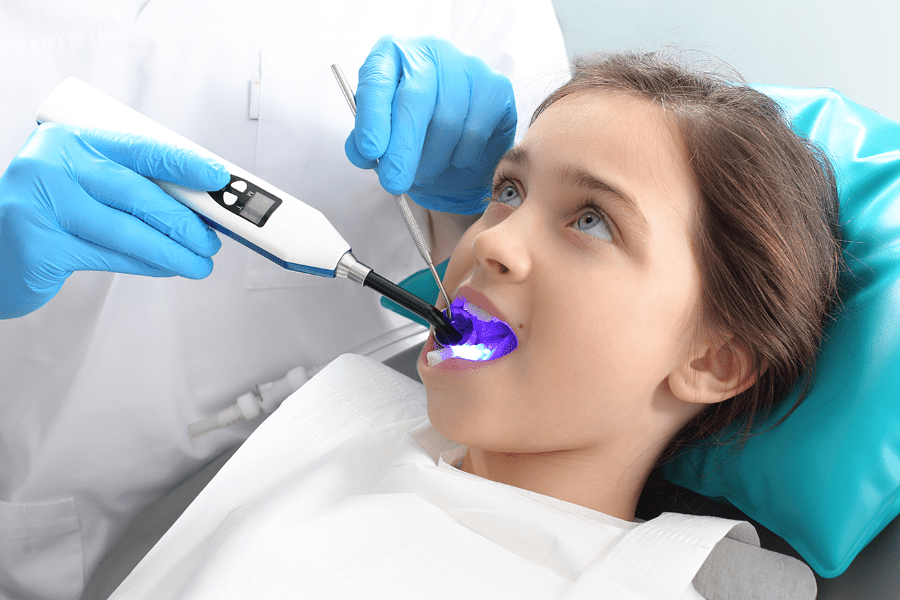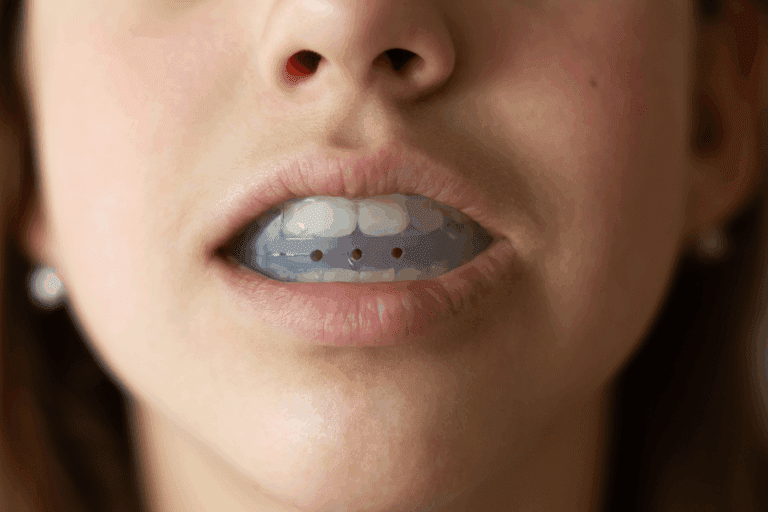Preventive care plays a vital role in maintaining good oral health. Rather than waiting to treat problems after they arise, many dental treatments are designed to stop issues before they start.
One of the most common and effective preventive measures is the application of dental sealants.
What are dental sealants?
The American Dental Association defines dental sealants as “systems that can be applied to the occlusal surfaces of teeth to penetrate anatomic surface pits and fissures and form a physical barrier on the tooth surface.”
In other words, dental sealants are specially designed liquid coatings applied to the back teeth (usually molars and premolars) to protect against bacteria that can cause cavities.
Molars and premolars have naturally deep trenches that can easily trap food particles and bacteria, increasing the risk of tooth decay and cavities. Dental sealants act as a protective barrier, sealing these grooves against that harmful debris and bacteria, effectively helping to prevent cavities before they start.
Dental sealants are incredibly common. According to the Centers for Disease Control and Prevention (CDC), 42% of children ages 6 to 11 and 48% of adolescents ages 12 to 19 have dental sealants on their permanent teeth.
How are dental sealants applied?
The application of dental sealants is an easy process that requires no preparation in advance.
First, your dentist will clean and thoroughly dry your teeth. After that, a gel is applied before the sealant to roughen up the area of the tooth, making it easier for the sealant to adhere to the surface. After a couple of seconds, the gel is wiped off, and the dental sealant is painted over the grooves of the teeth. Finally, a blue light is used to harden the sealant, and the painless procedure is done.
There is no recovery period required after a sealant is applied. You can eat and drink normally right after the procedure is done.
Who should get dental sealants?
Dental sealants are a good idea for anyone who tends to suffer from tooth decay in their molars. While they’re commonly recommended for children and teens, adults with healthy, decay-free molars are eligible for the added protection, too.
For children and teens, it’s a good idea to have dental sealants applied as soon as their premolars and permanent molars erupt. This ensures that their teeth are protected as they grow up.
Dental sealants may also be recommended for children with baby teeth, especially if those teeth have deep grooves that make them more vulnerable to decay. This helps protect them from falling out too early and keeps them healthy until the adult teeth come in.
Pro tip: Always contact to your dental team with any questions about procedures. They will be able to give you more details about what to expect and any benefits of the treatment in question.
How long do dental sealants last?
Over time, dental sealants can wear down or chip, especially with frequent consumption of hard or sticky foods. Therefore, it’s recommended that they be replaced every five years.
Other things to know about dental sealants
Dental sealants are a great way to help protect your teeth against decay; however, they are not perfect. It’s important to have a consistent oral hygiene routine and see your dentist regularly to monitor the health of your teeth and gums.
Although dental sealants aren’t a permanent safeguard for your teeth, there’s no doubt that they have a tremendous impact. The CDC estimates that “applying sealants in schools for about 7 million children from low-income families who don’t have them could save up to $300 million in dental treatment costs.”
When combined with daily care and regular dental visits, sealants can play a powerful role in reducing cavities and lowering long-term dental costs.
Bottom line: Dental sealants help protect oral health
In the fight against tooth decay, dental sealants offer a simple yet highly effective line of defense. While they aren’t a substitute for brushing, flossing, and regular dental checkups, they provide added protection, especially for children and teens.
By incorporating dental sealants into your preventive care routine, you’re taking a proactive step toward a healthier smile and fewer dental problems down the road.



